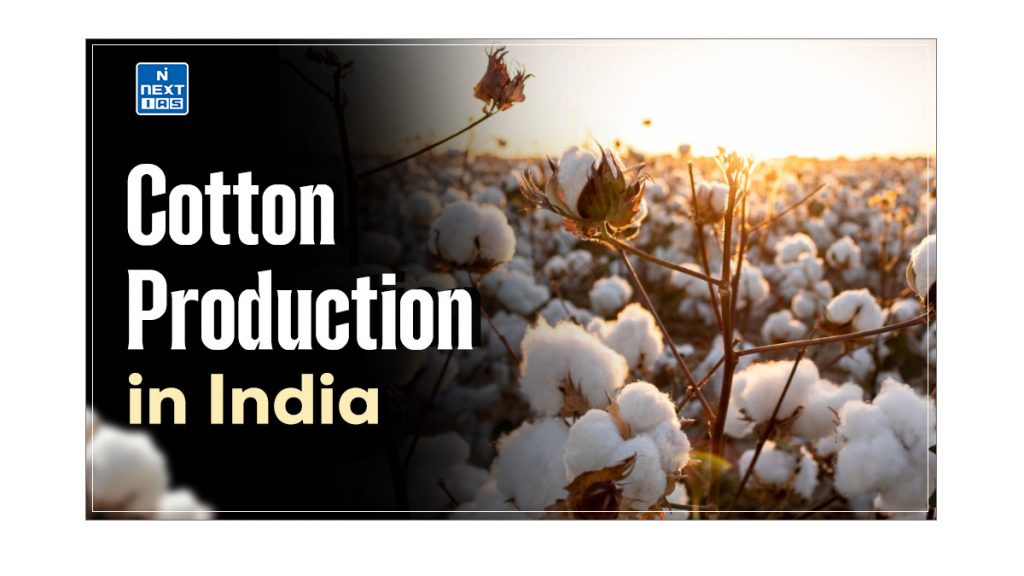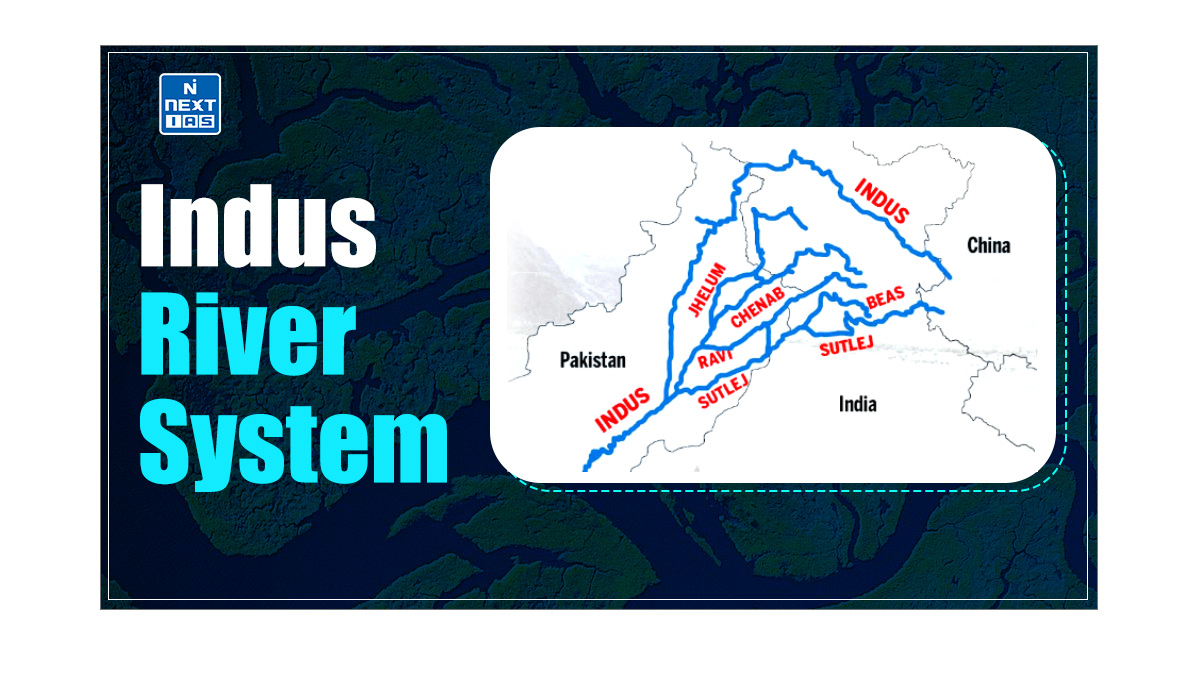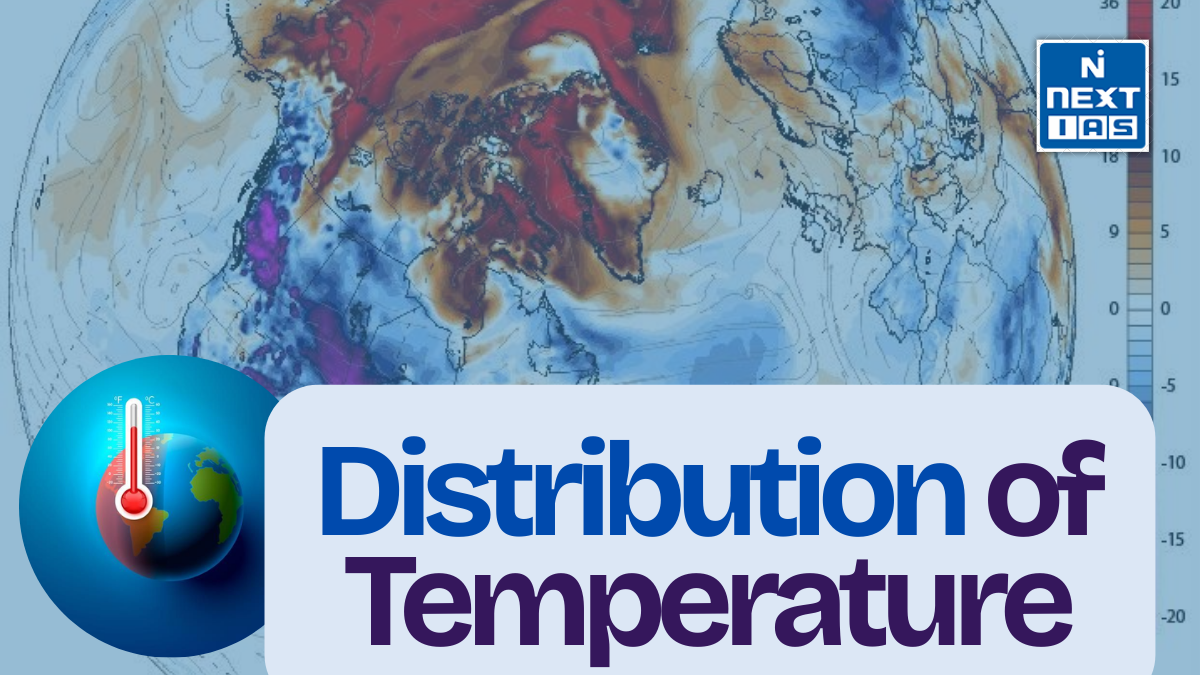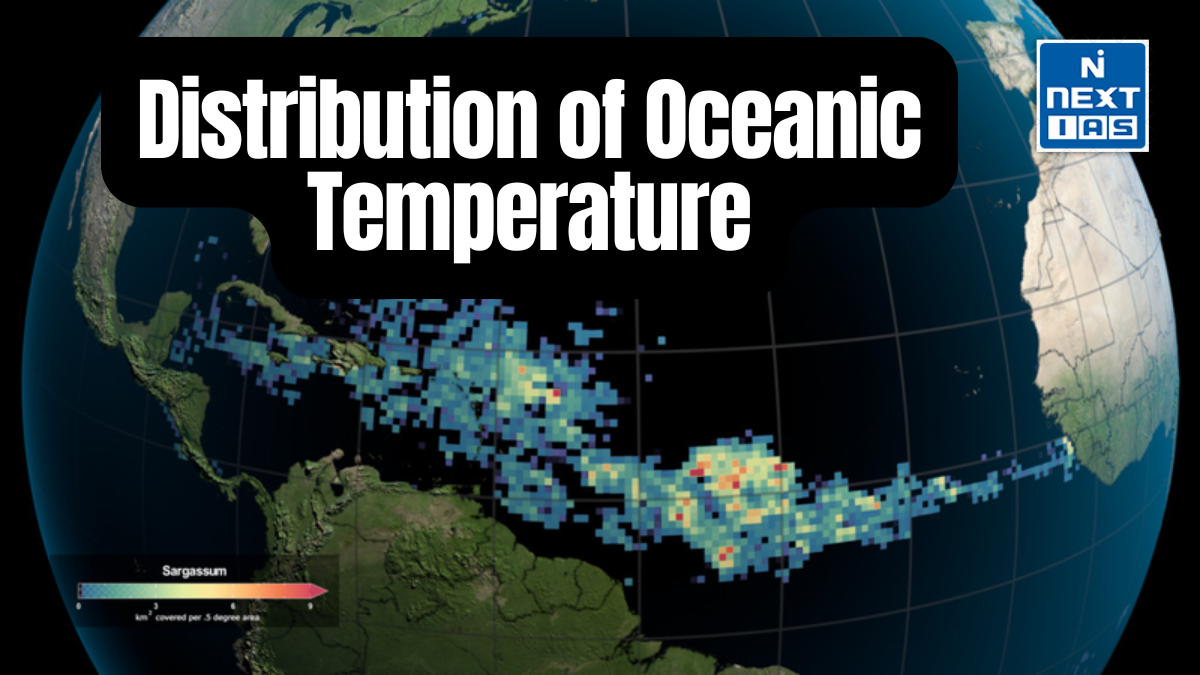
Cotton is a crucial cash crop in India, integral to both the economy and agriculture. This versatile crop thrives across various agro-ecological zones in India, benefiting from the country’s diverse climate and soil conditions. This article aims to study in detail the conditions necessary for the optimal growth of cotton, the various types of cotton produced in India, and the significant factors influencing its cultivation.
About Cotton
- India is the only country in the world that grows all four species of cotton cultivated. These species are:
- Gossypium arboreum (Asian Cotton),
- Gossypium herbaceum (Asian Cotton),
- Gossypium barbadense (Egyptian cotton), and
- Gossypium hirsutum (American Upland cotton).
- Cotton is the most important fibre crop. Its seeds are used for the vanaspati industry and fodder for milch cattle.
Types of Cotton
Three broad types of cotton are generally recognised based on its fibre length, strength and structure.
- Long-staple Cotton – It has the longest fibre, whose length varies from 24 to 27 mm.
- The fibre is fine and lustrous and is used for making superior-quality cloth. It fetches the best price.
- About half of the total cotton produced in India is long-stapled.
- It is largely grown in:
- Punjab,
- Haryana,
- Maharashtra,
- Tamil Nadu,
- Madhya Pradesh,
- Gujarat, and
- Andhra Pradesh.
- Medium Staple Cotton – Its fibre length is between 20 mm and 24 mm.
- About 44 per cent of the total cotton production in India is medium staple cotton.
- Its primary producers are Rajasthan, Punjab, Tamil Nadu, Madhya Pradesh, Uttar Pradesh, Karnataka, and Maharashtra.
- Short Staple Cotton – This cotton is of lower quality, with fibres less than 20 mm long. It is used for producing inferior cloth and commands a lower price.
- Approximately 6% of the total cotton production consists of short-staple cotton, with U.P, Andhra Pradesh, Rajasthan, Haryana, and Punjab being the primary producers.
Conditions for Growth of Cotton
- Cotton is chiefly a tropical and sub-tropical crop. It requires uniformly high temperatures (21°C to 30°C) and grows well within the average annual rainfall range of 50-100 cm.
- Most of the irrigated areas under cotton are in Punjab, Haryana, Gujarat, and Rajasthan.
- A high amount of rainfall in the beginning (helps in the sprouting of seeds) and sunny and dry weather at ripening time (moist weather during ripening leads to pest attacks) are beneficial for a good crop.
Crop Season of Cotton
- Cotton is a Kharif crop which requires 6 to 8 months to mature.
- Its time of sowing and harvesting differs in different parts of the country.
- Most of the crop is grown with other Kharif crops, such as maize, jawar, ragi, sesamum, castor, and groundnut.
| Region | Sowing Time | Harvesting Time | Note |
| Punjab and Haryana | April-May | December-January | To prevent crop damage due to winter frost. |
| Peninsular region | Up to October | January-May | There is no danger of winter frost. |
| Tamil Nadu (both as Kharif and as Rabi crops) | Before the onset of retreating monsoon (October) | April-May | Adequate amount of rainfall for sprouting of seeds. |
| January in the region of irrigation | August-September | Tamil Nadu remains dry from August- September. So, the picking period is free of rain. |
Soil Condition of Cotton
- Deep black soils (regur-lava soil) of the Deccan Plateau, Malwa Plateau, and Gujarat are best suited for cotton cultivation.
- Cotton also grows well in alluvial soils of the Sutlej-Ganga Plain and Red and Laterite soils of the Peninsular region.
- However, cotton quickly exhausts the soil’s fertility.
- Since cotton picking is not yet mechanized, much cheap and efficient labour is required.
- Normally, the picking season is spread over about three months.
Distribution of Cotton
- In India, cotton is grown in three distinct agro-ecological zones, i.e:
- Northern Zone (Punjab, Haryana, and Rajasthan),
- Central Zone (Gujarat, Maharashtra, and Madhya Pradesh), and
- Southern Zone (Andhra Pradesh, Tamil Nadu, and Karnataka).
- Gujarat is the largest producer of cotton in India, followed by Maharashtra and Telangana.
- India exports inferior quality cotton, mainly to the U.K., mixed with superior quality cotton.
- India has been a major importer of superior-quality long-staple cotton, mainly from the USA, Russia, Sudan, and Kenya.
| Rank | States | Factors |
| First | Gujarat | Regur-black cotton soil and 80-100 cm annual rainfall. |
| Second | Telangana | Regur-black soil and favourable conditions. |
| Third | Maharashtra | Regur- deep black cotton suffers from low productivity. |
Production of Cotton in India
- India’s cotton production during 2020-21 was 371 lakh bales. The threefold increase in cotton production during the past two decades is due to the use of GM crops and other technologies.
- India has the largest area under cotton cultivation in the world.
- However, India’s productivity (yield per unit area) is much lower than other major cotton-producing countries, meaning a much larger area is used for cotton production.
- Indeed, India’s productivity has been only a third of these countries for over four decades.
Unfavourable factors for growth of Cotton
- The growth is retarded below 20°C. Frost is the biggest enemy of the cotton plant. It is grown in areas with at least 210 frost-free days yearly.
- Moist weather and heavy rainfall during boll-opening and picking (rains lead to fibre damage) are detrimental to cotton, making the plant vulnerable to pests and diseases.
- Almost 65 per cent of the area under cotton is rainfed, with erratic and poorly distributed rains. It is also subjected to severe pest and disease attacks.
Cotton Cultivation in India
- Cotton cultivation in India plays a crucial role in the country’s agricultural economy and textile industry.
- India is one of the largest producers of cotton globally, with major cultivation areas in Gujarat, Maharashtra, Andhra Pradesh, and Tamil Nadu.
- The crop thrives in warm climates, ideally requiring temperatures between 21-30°C and well-drained loamy soils.
- Typically grown as a Kharif crop, cotton is sown in June-July and harvested from November to February.
- The crop’s success is highly dependent on adequate rainfall, with an ideal range of 50-100 cm, and efficient water management, as it is sensitive to waterlogging.
Importance of Cotton
The importance of cotton crop is as follows:
- Economic Significance – Cotton is a major cash crop in India, providing livelihoods to millions of farmers and supporting the country’s large textile industry.
- Global Position – India is the largest producer of cotton globally, playing a crucial role in the international cotton market.
- Textile Industry Backbone – Cotton is the primary raw material for the textile industry, which is a significant contributor to India’s GDP and export earnings.
- Employment Generation – The cotton industry, from farming to textiles, creates employment opportunities across various sectors, including agriculture, manufacturing, and trade.
- Cultural Importance – Cotton has historical and cultural significance in India, being central to traditional clothing and crafts.
Bt Cotton
- Genetically Modified (GM) and pest-resistant Bt cotton hybrids have captured the Indian market since their introduction in 2002.
- They now cover over 95% of the cotton area, with the seeds produced entirely by the private sector.
- Maharashtra has the largest area under Bt cotton, followed by Andhra Pradesh, Gujarat, and Madhya Pradesh.
- Punjab and Haryana are known for cultivating Bt cotton in the north. Bt stands for the bacterium Bacillus thuringiensis.
- Bacillus thuringiensis produces a toxin called Bt toxin, which is detrimental to certain kinds of pests (bollworms) that infect cotton crops.
- This trait of Bacillus thuringiensis is induced into cotton by genetic modification.
- However, yields have decreased sharply over time due to other pest populations that Bt cotton could not control.
- The Bt toxin controls only bollworms, while cotton attracts more than 100 pests.
- Another concern with Bt cotton is that the bollworm may develop resistance, similar to what happened in China.
Conclusion
Cotton remains a cornerstone of India’s agricultural sector, contributing significantly to the country’s economy and supporting numerous industries. While adopting genetically modified Bt cotton has bolstered production, challenges such as pest resistance and soil fertility issues continue to affect yields. Understanding the conditions favourable for cotton growth, along with ongoing technological advancements and management practices, is essential for sustaining India’s cotton industry and improving its global competitiveness.
Frequently Asked Questions (FAQs)
Which country is the largest producer of cotton?
India is the largest producer of cotton in the world.
What are the different types of cotton?
The different types of cotton include:
– Upland Cotton, which is the most widely grown,
– Egyptian and Pima Cotton, both known for their extra-long staple fibres and high quality,
– Sea Island Cotton, which is luxurious but produced in limited quantities,
– Levant and Tree Cotton have shorter and coarser fibers, mainly grown in specific regions.
Which soil is ideal for growing cotton?
Black soil, also known as Regur soil, is ideal for growing cotton due to its moisture-retaining capacity and rich nutrient content, particularly in regions like Maharashtra, Gujarat, and Madhya Pradesh.






